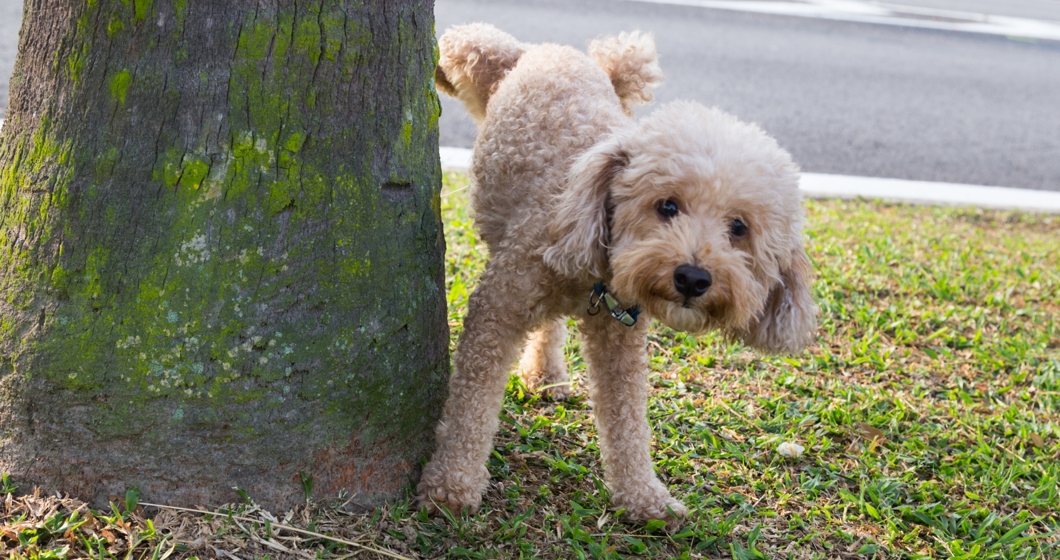To pee, or not to pee - that is the question your dog is posed with every time he or she heads to the backyard or out for a walk. The answer here is no surprise to us pet owners; yes, they will pee every time…and that’s normal. The hows, whys, and whats of our pup's pee patterns may be a little more of a mystery to us. Whether you think your dog urinates too much or their pee is an odd color (or oddly colorless!), the no-nonsense health information you need is right here.
Are you wondering why your dog is peeing a lot or are you concerned about what causes brown urine in dogs? Just like with people, a dog’s urine can give clues about their health. Urination frequency and color can have indications about changes to your pet’s health or even bring to light a serious medical issue. It never hurts to take note of any changes in your dog's potty routine or habits.
Why is My Dog Peeing So Much?
Your pooch’s urination frequency may not be a top-of-mind concern. But if you notice your pup is asking to go outside more than normal or is even having uncharacteristic accidents in the house, there might be something up.
A normal, healthy adult dog should be able to hold their pee for 6-8 hours and need to relieve themself three to five times a day. However, there are behavioral reasons your dog may be going more than this that should not necessarily cause concern. When out on a walk, your dog may pee on every bush, rock, or hydrant it passes by. This isn’t because your pooch is hoarding pounds of pee, but rather marking their territory.
Other reasons your dog may be going more often can be related to additional behavioral or situational issues such as an anxious dog experiencing changes to its routine or separation from its owner. Diet changes and increased water intake due to heat or high activity can also be reasons. The age of your pet is also a contributing factor to the frequency they need to go potty. Puppies who are still learning how to “hold it” may need to pee every two hours. They also drink more water than older dogs which contributes to their frequent bathroom needs. As our dear pet friends age, they may also need to urinate more frequently due to cognitive dysfunction or incontinence.
Other health reasons your dog is peeing a lot:
While most of our furry friends' urination changes can be tied back to a behavioral or situational cause, there are health-related issues that can be the root of these problems. Some of these medical causes are: urinary tract infection, prostate disease, kidney or liver disease, bladder cancer, diabetes, urinary pH imbalance, and other serious ailments and illnesses that need your veterinarian’s immediate attention.
What Color Should My Dog’s Urine Be?
Not only does the frequency of your pet’s urination have indications of their health but also the color of it. From very clear to dark brown, what do these colors mean?
Why is my dog’s urine clear?
Different shades of yellow can be normal for your dog’s pee. Often lighter yellow and clear urine is an indicator of more diluted urine, which may be due to your dog drinking more water and urinating more often. While your dog peeing a lot of clear urine typically isn’t a concern, if it continues for an extended time period and doesn’t seem to be tied to overhydrating, a call or visit to your vet is recommended. The vet can perform a urinalysis to make sure that there are no issues with your pup’s kidney or liver not being able to remove toxins from their body.
What does it mean when your dog's urine is brown?
Darker yellow urine in dogs often means that it is more concentrated. You may notice this happening when your pup has had to hold their urine for a longer time period than normal. It may also be a sign that they have not drunk enough water for the day. If you notice this may be the case, we recommend offering your pooch more water. Alternatively, if your dog’s urine is brown or black, there may be a more serious health issue present. Dark brown or black urine in dogs can come from damage to the red blood cells, muscle damage from trauma, severe dehydration, internal bleeding, or toxic reactions. If you notice this happening with your pet, contact your veterinarian immediately.
If your pet’s pee doesn’t fall into one of these color categories, check out this chart from Keeping Pet to identify other reasons why your furry friend’s urine is presenting in an unusual color. If you have any concerns about your pet’s health, we always recommend consulting with your veterinarian first.
Just like your dog’s urine can have significant health indicators, so can your pup’s poop. Check out these 3 Things Your Dog's Poop Can Tell You About Their Health.
.2309060830291.jpg)


